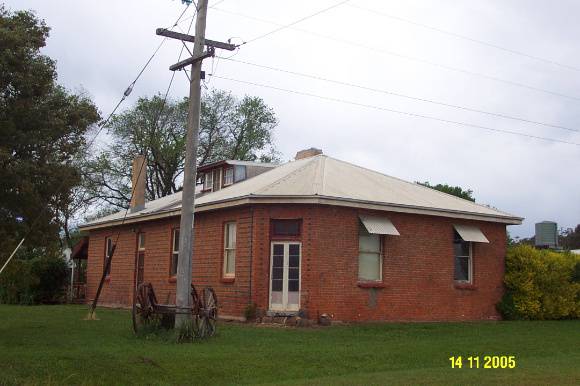| Back to search results » | Back to search page » |
|
RISING SUN HOTEL (FORMER)
Location1510 LYONS-HOTSPUR ROAD, HOTSPUR, GLENELG SHIRE LevelRecommended for Heritage Overlay |
|
Statement of Significance
What is significant? How is it significant?
The former Rising Sun Hotel is located on the north east corner of the two principal historic roads through Hotspur, McDonald Street and MacKenzie Street, overlooking the Crawford River and the road bridge. The former hotel has been converted into a private residence, but still retains the form and stylistic details of an early restrained Victorian period commercial building. The former hotel is single storey, built of handmade bricks, locally dug and burnt on the nearby Crawford River. The decorative use of dichromatic brickwork alternating courses of dark bricks with red bricks, while traditional in Britain and France is very unusual in Victoria before the mid 1860s . Also unusual is that only the east facade of the building has this treatment. The other faces of the building are traditionally laid red bricks. Originally two storey, the lower storey remains after the upper storey was dismantled in about 1950. The hotel was constructed in 1857 for Publican and former Constable John McConachy and his wife Jane, who held the licence of the nearby Crawford Inn from 1854 until they took up the Rising Sun. The property suffers from rising damp, and an unsympathetic 'pop up' in the roof (dating from about 1950) detracts from its significance slightly. The integrity of the complex is fair, although the first storey of the hotel has been lost.
The former Rising Sun Hotel is of historical and architectural significance to the Glenelg Shire.
Why is it significant?
The former Rising Sun Hotel is of historical significance as one of the two first hotels in the township of Hotspur and the surrounding area. The siting of the hotel is also historically significanct as the oldest surviving hotel in Hotspur, located on a key historic intersection overlooking the traditional river crossing and later road bridge. It is of of further significance as it provides us with an understanding of the hotel's clientele, and status in the township. This is evident by the building's prominent location and imposing facade which would have dominated both the major route from Portland to Casterton, as well as the route to many of the major pastoral properties surrounding Hotspur. Of architectural interest is the use of dichromatic bricks in this building.
Group
Recreation and Entertainment
Category
Hotel




